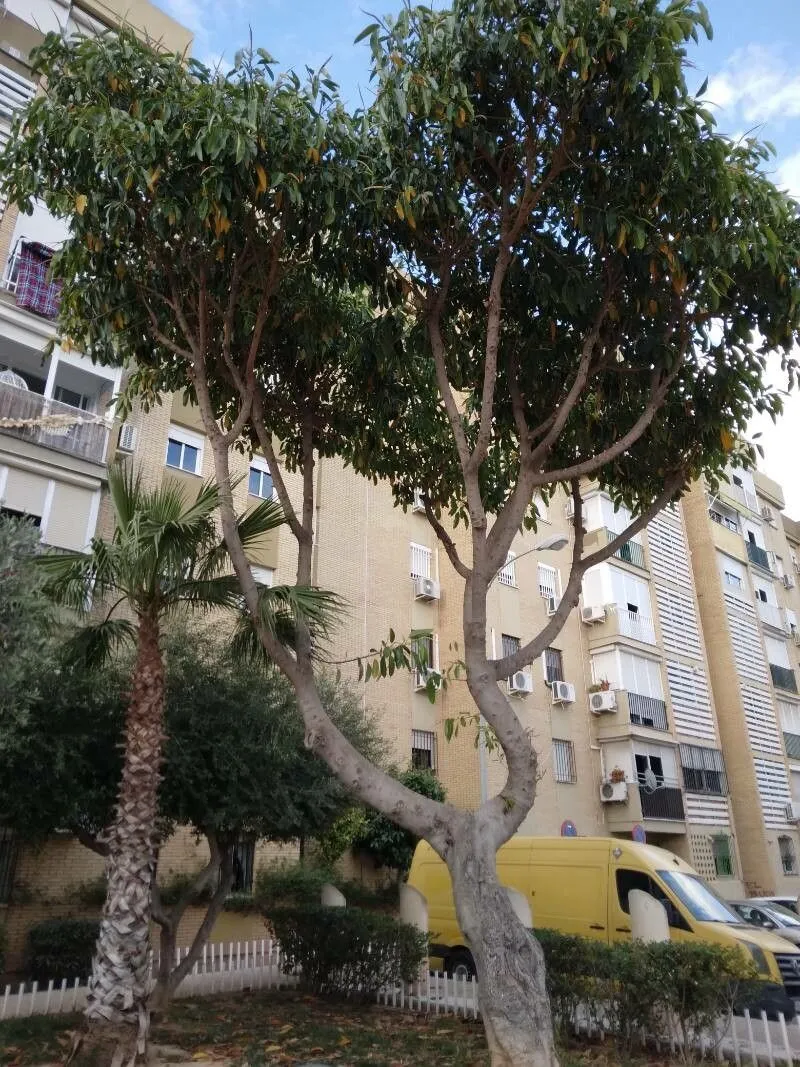
Author: (Desv.) A.Juss.
Bibliography: Mém. Mus. Hist. Nat. 19: 249 (1830 publ. 1831)
Year: 1831
Status: accepted
Rank: species
Genus: Khaya
Vegetable: False
Observations: W. Trop. Africa to N. Uganda
Senegal mahogany, scientifically known as Khaya senegalensis, is a significant tree species native to the tropical regions of Western Africa extending to Northern Uganda. This majestic tree belongs to the family Meliaceae, a distinguished group of flowering plants renowned for their economic and ecological value.
Characterized by its grandeur, the Senegal mahogany can reach impressive heights, making it a prominent feature in its native landscapes. The tree’s foliage is lush, with pinnately compound leaves that add to its attractive appearance. During its blooming period, Khaya senegalensis produces small but fragrant flowers, which are followed by woody capsules containing seeds.
Historically, the value of this species was well-documented as early as the 19th century when it was described in the Mémoires du Muséum d’Histoire Naturelle by the botanist Desfontaines, and later classified by A.Juss.
Senegal mahogany is highly regarded for its durable and beautiful timber, which is a sought-after material in the woodworking and furniture industries. The wood’s rich, reddish-brown hue and fine grain make it a choice material for high-quality furniture, flooring, and decorative veneers. Moreover, the tree’s bark and seeds hold medicinal properties, traditionally used in local medicine for treating various ailments.
Ecologically, Khaya senegalensis plays a vital role in its habitat. It helps maintain the balance of the ecosystem by providing shelter and food to a wide array of wildlife. The tree’s ability to thrive in both riverine areas and savannas demonstrates its adaptability, making it a valuable resource in reforestation and land rehabilitation efforts.
Additionally, the Senegal mahogany contributes significantly to local economies where it is grown. Beyond its lumber, the tree is also planted for shade and ornamental purposes, enriching the natural beauty of parks and urban environments.
In summary, the Senegal mahogany is not only admired for its aesthetic and practical applications but also for its inherent contributions to the environment and economy. Its enduring presence in both natural and cultivated landscapes underscores the value and versatility of Khaya senegalensis.
Eng: senegal mahogany, dryzone-mahogany, african mahogany, benin mahogany, dry zone mahogany
Por: caoba
Swe: gambiamahogny
En: Senegal mahogany, Dryzone-mahogany, African Mahogany, Benin Mahogany, Dry Zone Mahogany
Pt: Caoba
Sv: Gambiamahogny
Taken Dec 20, 2021 by Maarten Vanhove (cc-by-sa)
Taken Jul 24, 2019 by Jing Wei Yeong (cc-by-sa)
Taken Apr 19, 2022 by AJ G (cc-by-sa)
Taken Oct 24, 2022 by Tristan Jaton-Maria (cc-by-sa)
Taken Oct 14, 2022 by Trang Dang (cc-by-sa)
Taken Apr 19, 2022 by AJ G (cc-by-sa)
Taken Jul 24, 2019 by Jing Wei Yeong (cc-by-sa)
Taken Oct 24, 2022 by Tristan Jaton-Maria (cc-by-sa)
Taken Oct 24, 2022 by Tristan Jaton-Maria (cc-by-sa)
Taken Oct 14, 2022 by Trang Dang (cc-by-sa)
© copyright of the Board of Trustees of the Royal Botanic Gardens, Kew.
© copyright of the Board of Trustees of the Royal Botanic Gardens, Kew.
© copyright of the Board of Trustees of the Royal Botanic Gardens, Kew.
Taken Dec 11, 2021 by Zakaria Daim (cc-by-sa)
Taken Dec 30, 2017 by huy HO (cc-by-sa)
Taken Apr 19, 2022 by AJ G (cc-by-sa)
Growth habit: Tree
Family: Myrtaceae Author: (F.Muell.) K.D.Hill & L.A.S.Johnson Bibliography: Telopea 6: 402 (1995) Year: 1995 Status:…
Family: Rubiaceae Author: Pierre ex A.Froehner Bibliography: Notizbl. Bot. Gart. Berlin-Dahlem 1: 237 (1897) Year:…
Family: Sapindaceae Author: Koidz. Bibliography: J. Coll. Sci. Imp. Univ. Tokyo 32(1): 38 (1911) Year:…
Family: Asteraceae Author: A.Gray Bibliography: Pacif. Railr. Rep.: 107 (1857) Year: 1857 Status: accepted Rank:…
Family: Fabaceae Author: Medik. Bibliography: Vorles. Churpfälz. Phys.-Ökon. Ges. 2: 398 (1787) Year: 1787 Status:…
Family: Aspleniaceae Author: (Cav.) Alston Bibliography: Bull. Misc. Inform. Kew 1932: 309 (1932) Year: 1932…